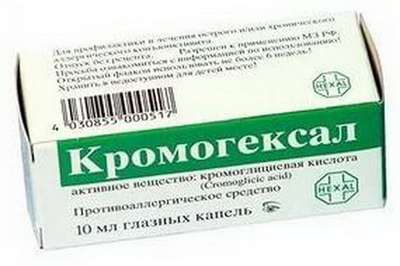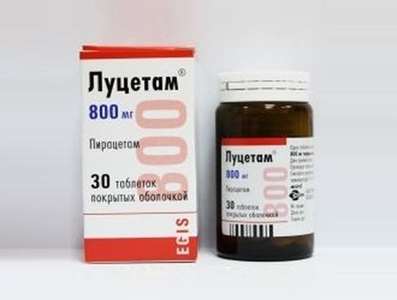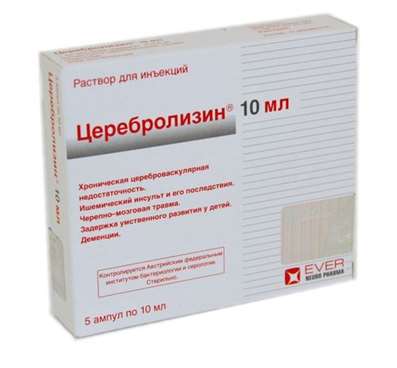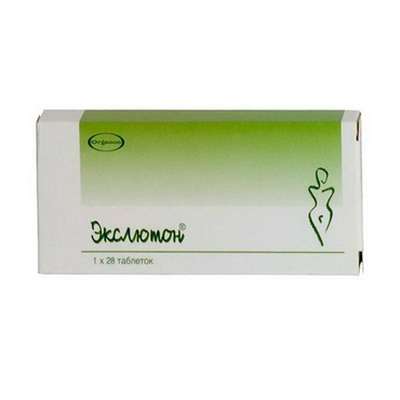Instruction for use: Mivacron
I want this, give me price
Active substance: Mivacurium chloride
ATX Code
M03AC10 Mivacurium chloride
Pharmacological group
n Cholinolytics (muscle relaxants)
The nosological classification (ICD-10)
Z100 * CLASS XXII Surgical practice
Abdominal surgery, adenomectomy, Amputation, Coronary angioplasty, Angioplasty of the carotid arteries, Antiseptic skin treatment for wounds, Antiseptic Hand, Appendectomy, atherectomy, Balloon coronary angioplasty, Vaginal hysterectomy, The coronary bypass, Interventions in the vagina and cervix, Interventions on the bladder, Intervention in the mouth, Restoration and reconstructive surgery, Hand hygiene of medical personnel, Gynecologic surgery, Gynecological intervention, Gynecological surgery, Hypovolemic shock during operations, Disinfection of purulent wounds, Disinfection of wounds edges, Diagnostic intervention, Diagnostic procedures, Cervical Diathermocoagulation, Long-surgery, Replacing the fistula catheters, Infection in orthopedic surgery, Artificial heart valve, cystectomy, Short-term outpatient surgery, Short-term operation, Short surgical procedures, Krikotireotomiya, Blood loss during surgery, Bleeding during surgery and in the postoperative period, Kuldotsentez, laser photocoagulation, laser coagulation, retinal laser coagulation, Laparoscopy, Laparoscopy in Gynecology, CSF fistula, Small gynecological operations, Small surgical procedures, Mastectomy and subsequent plastic, mediastinotomy, Microsurgical operations on the ear, Mukogingivalnye operation, suturing, Minor surgery, neurosurgical operation, Immobilization of the eyeball in ophthalmic surgery, testectomy, pancreatectomy, Perikardektomiya, The period of rehabilitation after surgery, The period of, convalescence after surgery, Percutaneous transluminal coronary angioplasty, Pleural thoracentesis, Pneumonia postoperative and posttraumatic, Preparation for surgical procedures, Preparation for surgery, Preparation of the surgeon's hands before surgery, Preparation of the colon for surgical procedures, Postoperative aspiration pneumonia in neurosurgical and thoracic surgery, Postoperative nausea, Postoperative bleeding, postoperative granuloma, postoperative shock, The early postoperative period, myocardial revascularization, Radiectomy, gastric Resection, bowel resection, uterine Resection, liver Resection, enterectomy, Resection of part of the stomach, Reocclusion of the operated vessel, Bonding tissues during surgical procedures, Removal of sutures, Condition after eye surgery, Condition after surgery, Condition after surgery in the nasal cavity, Condition after gastrectomy, Status after resection of the small intestine, Condition after tonsillectomy, Condition after removal of the duodenum, Condition after phlebectomy, Vascular surgery, Splenectomy, Sterilization of surgical instruments, Sterilization of surgical instruments, sternotomy, Dental surgery, Dental intervention in periodontal tissues, strumectomy, Tonsillectomy, Thoracic surgery, total gastrectomy, Transdermal intravascular coronary angioplasty, Transurethral resection, Turbinektomiya, Removal of a tooth, cataract surgery, Removal of cysts, tonsillectomy, Removal of fibroids, Removing the mobile primary teeth, Removing polyps, Removing broken tooth, Removal of the uterus body, Removal of sutures, Urethrotomy, Fistula likvoroprovodyaschih ways, Frontoetmoidogaymorotomiya, Surgical infection, Surgical treatment of chronic limb ulcersm, Surgery, The surgery in the anal area, The surgery on the colon, Surgical practice, The surgical procedure, Surgical interventions, Surgery on the gastrointestinal tract, Surgical procedures on the urinary tract, Surgical procedures on the urinary system, Surgical intervention of the genitourinary system, Surgical procedures on the heart, Surgical manipulation, surgery, Surgery on the veins, Surgical intervention, Vascular surgery, Surgical treatment of thrombosis, cholecystectomy, Partial gastric resection, transabdominal hysterectomy, Percutaneous transluminal coronary angioplasty, Percutaneous transluminal angioplasty, Coronary artery bypass, tooth Extirpation, Extirpation of milk teeth, pulpectomy, pulsative cardiopulmonary bypass, tooth Extraction, teeth Extraction, cataract extraction, Electrocoagulation, endourological intervention, episiotomy, Etmoidotomiya, Complications after tooth extraction
Composition and form of release
Solution for intravenous administration 1 ml
Myvacuria chloride 2 mg
Auxiliary substances: hydrochloric acid; water for injections
In ampoules of 5 or 10 ml; In the package 5 pcs.
Description of dosage form
Transparent liquid, practically free of inclusions.
Characteristic
High selective, nondepolarizing short-acting muscle relaxant.
pharmachologic effect
Pharmacological action - miorelaksiruyuschee, nedepolyarizuyuschee.
Causes a short-term reversible blockade of neuromuscular transmission. Competing with acetylcholine for blocking n-holinoretseptory in skeletal muscles. It blocks presynaptic sodium channels and reduces the release of acetylcholine from nerve endings.
Pharmacokinetics
It is a mixture of three stereoisomers. Trans-trans and cis-trans stereoisomers account for 92-96% of the formulation and differ little in the ability to cause neuromuscular blockade. The effectiveness of the cis-cis stereoisomer is 10 times less than the two above-mentioned stereoisomers.
The main way of metabolism is enzymatic hydrolysis with the participation of plasma cholinesterase with the formation of metabolites - quaternary alcohol and quaternary monoester, which have no significant effect on neuromuscular conduction and cardiovascular system. Apparently, there are other ways of cleavage / excretion of myvacuria chloride (for example, hydrolysis under the action of liver esterases, excretion with bile, renal excretion).
Clinical Pharmacology
When administered in the recommended dose range, Miwacron does not block the vagus nerve and nerve ganglia, does not significantly affect the heart rate and does not prevent bradycardia caused by anesthetics or vagal nerve stimulation during surgery.
Indication
As part of general anesthesia to maintain relaxation of skeletal muscles when intubation of the trachea and mechanical ventilation during surgical operations.
Contraindications
Hypersensitivity, homozygous for the gene of atypical cholinesterase.
With caution: renal and / or hepatic insufficiency, cirrhosis, neuromuscular diseases, bronchial asthma, cardiovascular diseases, bronchogenic carcinoma or other malignant neoplasms, marked electrolyte imbalance, dehydration, hypokalemia, burns, cachexia, severe anemia, Decreased cholinesterase activity (severe hepatic insufficiency, cholinesterase heterozygosity, effects of antifungal, anticholinesterase drugs, MAO inhibitors, pancuronium, organic phosphates), exposure to neurotoxic insecticides, hypothermia, obesity, respiratory failure, respiratory depression, pregnancy, lactation, age under 2 Months.
pregnancy and lactation
Perhaps, if the expected effect of therapy exceeds the potential risk to the fetus.
To maintain neuromuscular blockade during caesarean section, dose adjustment and rate of drug administration are required (during pregnancy, the cholinesterase level in the plasma decreases). Reduction in the rate of administration is required for patients who were prescribed sulfuric acid magnesium before cesarean section (magnesium ions enhance the action of the drug). At present, it is not known whether Mivacron is excreted in breast milk.
Side effects
From the immune system: very rarely (<0.01%) - severe anaphylactic or anaphylactoid reactions (when combined with one or more drugs for anesthesia).
From the cardiovascular system: very often (≥10%) - hot flashes; ≥0,1% - <1% - transient tachycardia, lowering blood pressure.
On the part of the respiratory, thorax and mediastinal organs: ≥ 0.1% - <1% - bronchospasm, dyspnea.
From the skin and subcutaneous tissues: ≥0,1% - <1% - erythema, urticaria, rash.
The occurrence of hot flashes, erythema, urticaria, lowering blood pressure, transient tachycardia, or bronchospasm is associated with the release of histamine and depends on the dose of Mivakron. Usually, these symptoms are observed after a rapid administration of the drug at an initial dose equal to or greater than 0.2 mg / kg, and decrease if the injection of Mivacron is performed within 30-60 seconds or more than 30 seconds when the drug is administered in fractional doses.
Interaction
With simultaneous application of myvacuria with enflurane, isoflurane, sevoflurane and halothane, neuromuscular blockade increases.
Antibiotics (aminoglycosides, polymyxins, spectinomycins, tetracyclines, lincomycin and clindamycin), antiarrhythmics (propranolol, BCC, lidocaine, procainamide and quinidine), diuretics (furosemide, thiazide (possibly), mannitol, acetazolamide), magnesium salts, ketamine, lithium salts , Ganglion blockers (trimetafan, hexamethonium) may increase the degree and / or duration of the neuromuscular blockade caused by nondepolarizing muscle relaxants, incl. And Mivacron.
Drugs that cause a decrease in plasma cholinesterase activity (antifungal, anticholinesterase drugs, MAO inhibitors, pancuronium, organic phosphates) may prolong the duration of the neuromuscular blockade induced by Myvacron.
In rare cases, various antibiotics, beta-blockers (propranolol, oxprenolol), antiarrhythmics (procainamide, quinidine) and antirheumatic drugs (chloroquine, D-penicillamine), trimetaphan, chlorpromazine, steroids, phenytoin and lithium cause myasthenia gravis exacerbation, myasthenic syndrome development and show Latent myasthenia gravis, which is accompanied by an increase in sensitivity to Mivakron.
The combined use of depolarizing neuromuscular blockers and Myvacron may cause a stronger blockade compared with the expected one from the administration of a single Miovacron in an equivalent total dose. The severity of the synergistic effect varies depending on the combination of drugs.
When interacting with suxamethonium chloride, neuromuscular blockade may be prolonged, which is difficult to stop with anticholinesterase drugs.
Dosing and Administration
In / in. To adults.
Bolus administration. In adult patients with general anesthesia, the average dose required for 95% suppression of the reaction of the adductor tibialis muscle in response to stimulation of the ulnar nerve (ED95) is 0.07 mg / kg (0.06-0.09 mg / kg ).
With bolus administration, the recommended dose is 0.07-0.25 mg / kg.
Recommended schemes for intubation of the trachea:
1. At a dose of 0.2 mg / kg for 30 seconds (optimal conditions for intubation of the trachea are noted 2-2.5 minutes after the administration of the drug).
2. In a dose of 0.25 mg / kg fractional (0.15 mg / kg and 0.1 mg / kg with an interval of 30 seconds). Optimal conditions for intubation of the trachea are noted 1.5-2 min after the first dose.
The duration of neuromuscular blockade depends on the dose of the drug. When administered at doses of 0.07 mg / kg, 0.15 mg / kg, 0.2 mg / kg and 0.25 mg / kg, the duration of the neuromuscular blockade was 13, 16, 20 and 23 min, respectively. Mivacron in a dose of up to 0.15 mg / kg can be administered for 5-15 seconds, at higher doses - for 30 seconds, to avoid the development of reactions from the cardiovascular system.
The period of muscle relaxation can be prolonged by the administration of maintenance doses of Mivakron. Thus, additional administration of the drug during general anesthesia at a dose of 0.1 mg / kg increases the duration of neuromuscular blockade by approximately 15 minutes. Additional doses of Mivakron do not cause an increase in its effect.
When combined with isoflurane and enflurane, the initial dose of the drug should be reduced by 25%, when used with halothane, dose reduction is not required.
Spontaneous recovery of neuromuscular conduction is completed within 15 min and does not depend on the administered dose.
Infusion introduction (continuous infusion).
At the appearance of early signs of spontaneous recovery of neuromuscular conduction after the initial dose of Mivakron, an infusion rate of 8-10 μg / kg / min (0.5-0.6 mg / kg / h) is recommended. The initial infusion rate is determined by the patient's response to peripheral nerve stimulation and clinical criteria.
The infusion rate can be increased by 1 μg / kg / min (0.06 mg / kg / h), but until the next change it should be maintained at the same level for at least 3 minutes. Infusion at a rate of 6-7 μg / kg / min supports neuromuscular blockade at 89-99% for a long time. During a stable phase of general anesthesia with isoflurane or enflurane after a steady state of the parameters, the dose of mitakuria chloride is reduced by 40%, and with the use of sevoflurane - by 50%. With halothane anesthesia, a lower reduction in the rate of infusion of mitakuria chloride may be required.
The time of onset of spontaneous recovery of neuromuscular conduction does not depend on the duration of the infusion of Myvacron and is comparable to that for bolus administration of the drug.
Continuous infusion was not accompanied by the development of tachyphylaxis or the cumulation of the action of the drug.
Children 7 months - 12 years. Compared to adults, children at this age have a higher ED95 of Mivacron (approximately 0.1 mg / kg), the effect of the drug develops faster, its duration is shorter, and the spontaneous recovery of neuromuscular conduction is shorter.
Bolus administration.
The recommended dose is 0.1-0.2 mg / kg, the drug is administered within 5-15 seconds. In a stable phase of general anesthesia with the use of opioids or halothane, the administration of Mivacron at a dose of 0.2 mg / kg (after achieving a steady state of the parameters) provides an effective miorelaxation on average for 9 min, and a maintenance dose of 0.1 mg / kg increases its duration by 6-9 min. The maximum neuromuscular blockade and optimal conditions for intubation of the trachea are reached within 2 minutes after the administration of Mivacron in this dose. Supportive doses to children should be administered more often than adults.
With general anesthesia with halothane, administration of a maintenance dose of 0.1 mg / kg of Mivacron prolongs the effective neuromuscular blockade by approximately 7 minutes.
Infusion introduction.
Children 2-6 months usually require a higher rate of administration of Mivacron than adults (in the case of general anesthesia with halothane, the average infusion rate of Mivakron required to maintain a neuromuscular blockade at 89-99% is about 11 μg / kg / min Or 0.7 mg / kg / hour (4-24 μg / kg / min, or 0.2-1.5 mg / kg / hour).
Spontaneous recovery of neuromuscular conduction is completed within about 10 minutes.
Newborns and children under 2 months. There are no recommendations for the use of the drug.
In elderly patients with a single bolus injection, the onset of action, the duration of action and the rate of spontaneous recovery can increase by 20-30% compared with patients of a young age. Elderly patients may need to reduce the dose, reduce the frequency of administration and the speed of infusion of the drug.
In patients with severe diseases of the cardiovascular system, the initial dose of Mivakron should be administered for a long time, for 60 s, because In this case, the drug has a minimal effect on hemodynamic parameters during heart operations.
At the terminal stage of renal failure, the duration of neuromuscular blockade with the administration of Mivakron in a dose of 0.15 mg / kg increases by 1.5 times compared with that with preserved kidney function. The dose should be selected according to the individual reaction of the patient.
At the terminal stage of hepatic insufficiency, the duration of neuromuscular blockade with the administration of Mivacron at a dose of 0.15 mg / kg increases approximately 3-fold compared with that of normal liver function, which is caused by a significant decrease in plasma cholinesterase activity in this pathology. The dose should be selected according to the individual reaction of the patient.
Application when the activity of cholinesterase plasma decreases.
Mivacurium is metabolized by plasma cholinesterase. The decrease in plasma cholinesterase activity may be due to genetic anomalies of this enzyme (for example, in patients homozygous or heterozygous for the atypical plasma cholinesterase gene), various pathological conditions and the administration of certain drugs (see "Interaction"). With a decrease in plasma cholinesterase activity, the duration of neuromuscular blockade induced by Myvacron may increase. A slight decrease in plasma cholinesterase activity (within 20% of the lower limit of the norm) does not lead to a clinically significant change in the duration of the neuromuscular blockade. In patients heterozygous for the atypical cholinesterase gene, the duration of an effective blockade after administration of MiVacron at a dose of 0.15 mg / kg is 10 min longer than in the control group.
When obesity (exceeding the ideal body weight for a given growth of 30% or more), the initial dose of Mivakron should be calculated on the basis of ideal, not true body weight.
Monitoring.
As with the introduction of other muscle relaxants, with the use of Mivakron it is necessary to regularly monitor neuromuscular conduction to determine the individual dose of the drug.
Instructions for use
Mivacron can be used for infusion in undiluted form or in a mixture with the following infusion solutions: sodium chloride 0.9%, dextrose 5%, sodium chloride (0.18%) and glucose (4%) for IV infusions, Ringer's lactate solution For injections
If the Mivacron solution is diluted with one of the above solutions in a ratio of 1: 3 (to give a concentration of 0.5 mg / ml of Mivacron), the resulting solution remains stable for at least 48 hours at 30 ° C.
The drug should be diluted immediately before administration and administered in compliance with all rules of asepsis, and unused solution in an open ampoule must be destroyed.
Overdose
Symptoms: prolonged muscle paralysis and its consequences. There is an increased risk of hemodynamic side effects, especially blood pressure lowering.
Treatment: to ensure the patency of the airways and the use of ventilation until recovery of self-breathing, the use of sedatives (consciousness of patients is not violated), maintaining the function of the cardiovascular system (can be provided by a certain position of the patient, or, if necessary, the introduction of solutions or vasopressor drugs). The spontaneous recovery of neuromuscular conduction can be accelerated with the help of anticholinesterase drugs in combination with atropine or glycopyrrolate.
Precautionary measures
It should be used only in departments where there is equipment for intubation of the trachea and mechanical ventilation by qualified anesthetists.
Do not combine with depolarizing muscle relaxants and mix in a single syringe or simultaneously through a single needle with high alkaline solutions (barbiturates). If it is necessary to administer through the same needle or cannula, the needle or cannula is recommended to be washed with physiological solution after each preparation.
Compatible with many acidic solutions that are commonly used during surgery, for example, with fentanyl, alfentanil, sufentanil, droperidol and midazolam.
special instructions
As with the application of suxamethonium / succinylcholine, patients homozygous for the atypical plasma cholinesterase gene are extremely sensitive to the action of myvacuria. In three adult patients, a small dose of Mivakron 0.03 mg / kg (approximately equal to ED10-20 in genetically healthy patients) caused a complete neuromuscular blockade within 26-128 min.
When signs of spontaneous recovery of neuromuscular conduction appear, the appointment of a standard dose of neostigmine completely stopped the blockade.
Caution should be given to patients with hypersensitivity to histamine (for example, with asthma), and prone to lower blood pressure (for example, with hypovolemia). The duration of administration in these patients should be at least 60 seconds.
In adults with fast bolus injection of Mivakron in a dose of 0.2 mg / kg (greater than or equal to 3 × ED95), symptoms associated with the release of histamine were observed. However, slow administration of Mivakron at the same dose or a fractional dose of 0.25 mg / kg (see "Method of administration and dose") significantly reduces the adverse reactions from the cardiovascular system. In children, rapid bolus administration of Mivakron in a dose of 0.2 mg / kg did not affect the cardiovascular system.
As with the use of other nondepolarizing muscle relaxants, increased sensitivity to mewakuriya can be observed in patients with myasthenia or with other neuromuscular diseases and cachexia.
Patients with burns are first given a trial dose of Mivakron 0.015-0.02 mg / kg, then a suitable dose is administered under the control of stimulation of the peripheral nerve.
There is no data on the use of Mivacron in patients on prolonged ventilation in intensive care units.
Reversibility of neuromuscular blockade: signs of spontaneous recovery of neuromuscular conduction after the administration of Myvacron should be observed before the administration of drugs that restore it (for example, neostigmine). To assess the degree of conduction restoration before and after the appointment of such drugs, peripheral nerve stimulants should be used.
storage conditions
In the dark place at a temperature of no higher than 25 ° C. (Do not freeze).
Keep out of the reach of children.
Shelf life
1,5 years.
Do not use after the expiry date printed on the package.

 Cart
Cart





